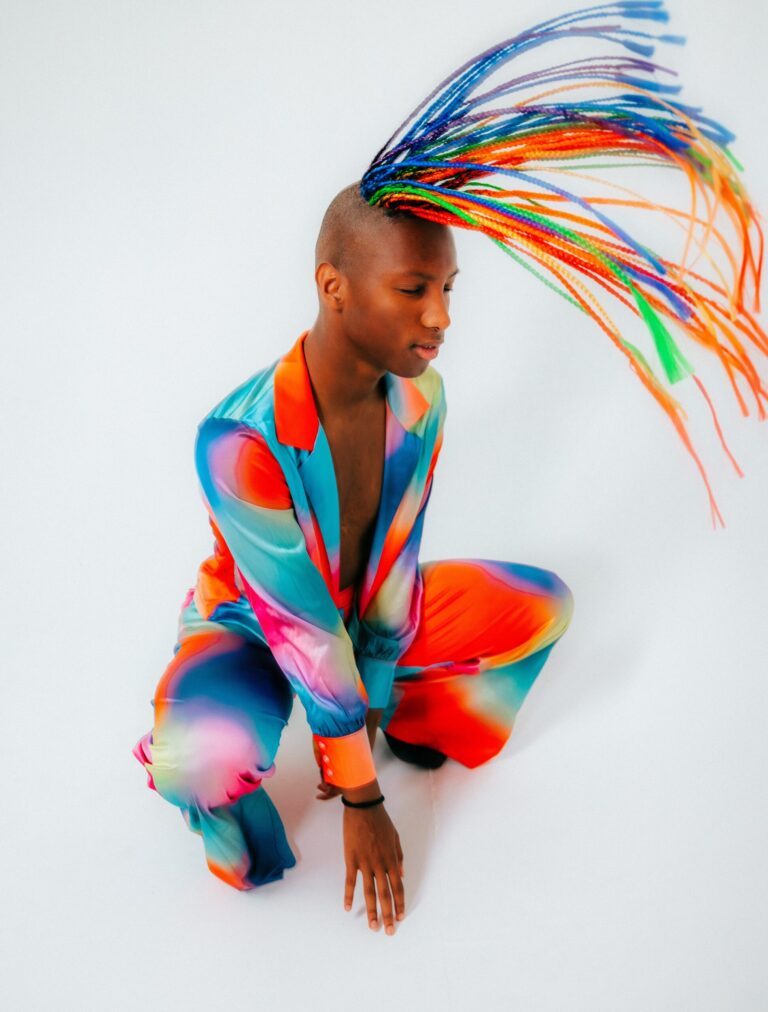Over the years, Neonlight have established themselves as a pair of producers who are continually pushing the boundaries of neuro. In addition to counting releases on labels including Blackout, Viper, Eatbrain, and their own diascope imprint, the duo have also received remix credits for tracks by prestigious artists such as Noisia, Hybrid Minds, and Black Sun Empire.
At the end of May, they returned with their sophomore album titled Vanity Fair. Over the course of fourteen tracks, Neonlight offer a tour de force of contemporary neuro which is sure to delight anyone who is partial to music from the heavier end of the drum and bass spectrum.
We recently caught up with Tobi and Jay to discuss their latest release, the continual development of neuro, and the German drum and bass scene.
Let’s talk about your new album! Is it a continuation of the saga you explored with My Galactic Tale, or is it something completely different?
Tobi: The new album is its own universe; it has its own story. The only connection to the previous album is that we looked for a concept and wanted to make the album something more than just a collection of tracks. Vanity Fair comes from a totally different perspective. My Galactic Tale was story driven; we created a whole comic for it! This time, we created something which is more connected to real life and people surrounding us.
Please tell me more about how it relates to your experiences!
Jay: We are always travelling around and meeting a lot of new people. You always meet similar characters! I guess you could call them stereotypes. So, we decided to pick the more out-there stereotypes. Everyone knows people like these. We made tracks which correspond to one of these characters. In each track, we have a little story about each character.
In the beginning, we had an idea where each track on the album would be like an actor coming on to a stage and performing a stereotypical role. We have a progression within each track. Then we combined everything together. We see the world as a stage for everyone! Everyone is more or less playing a role in different situations. Everyone is always playing a role depending on what setting you are in.
Tobi: You can see examples of this in the track names! Take Denunziant, for example. In German, this is a strong word for someone who is always looking out the window and seeing what the neighbours are doing and if they are doing something wrong so they can call the police or someone else. So, we took situations which are quite common and funny or strange!
Cany you tell me about a specific situation which inspired a particular track?
Jay: When we wrote Kinski, Tobi said ‘Ah, that sounds like this actor who was really, shall we say, an uncomfortable person’.
Tobi: The music sounds a bit rough… a bit annoying, a bit dirty. Kinski was a German actor in the 70s and 80s. He was a really good actor, but also when he was in interviews, he was really offensive to people. When he was in a bad mood, he showed it! He was a bit like someone you can’t really handle; someone where you can’t tell what’s going to happen in the next second!
Jay: It’s not about the real Kinski; it’s more about the kind of people who are always shouting at others.
Tobi: It’s not really friendly to meet a Kinski person! It’s especially a German thing; a lot of people know him in Germany, Austria, and Switzerland, where people have watched his movies. It’s a bit of an insider thing.
The album title makes total sense now…
Jay: First we started writing tracks which fit the archetype, and then we created the concept. We had a lot of tracks in the making; some were rough sketches, and some were more complete. At this stage, we asked ‘what person could each track be?’
Tobi: There was a back and forth between the concept and the music. Vanity Fair is the big theme for these stereotypes. Most people understand Vanity Fair as this magazine from the USA; nice people dressed up super posh and fancy, walking down the red carpet.
Jay: Presenting themselves!
Tobi: Everyone tries to be someone who they want people to think they are in public, but not in private. People play a kind of role; maybe they get booked for a Vanity Fair photoshoot because they play a particular role in public as a celebrity. But there is much more to show; you can show some bad habits and attitudes, so we made the project bigger and didn’t just focus on the nice kinds of people.
Jay: We opened the red carpet for the ignored person, the sad person, the hero… we had the idea of a red carpet, where people walk and present themselves with all their clothes and fancy watches where one person is going and the next is coming. That was really close to the title. Vanity Fair is also the title track. We had this title track pretty early, and we thought about how to shape the concept around the title.
Tobi: In German, if you type Vanity Fair in Wikipedia, there is a short description which says ‘a fair of selfish people’. We picked little things from this big topic and created our own little world, as you can see on the artwork…
Jay: We are in the centre of this city. The setting isn’t necessarily in the present; it is more in the future. It’s us in an ‘Other Place’. It’s not in space, or another planet; it’s just an ‘Other
Place’. We are surrounded by lots of people. We meet all these stereotypes, but we are passive. We just watch how they behave. The conclusion for us is wherever you go, you meet the same characters.
Tobi: They all just play a role. It’s possible for everyone to throw away these roles, to be open minded, and to be free again. It’s possible for people to say ‘I feel ignored’, but to change that and feel loved instead.
You can always present yourself to the world in lots of different ways, but you always end up presenting yourself in some way… it’s unavoidable, and you can never completely control what the world thinks about you!
Jay: I also read a few psychology essays which say you are born into a role; you are born into a family, you have parents, and your role is that of a child. Sometimes it’s your role to be a worker, where you have a boss above you and you must do what they say. Wherever you go, wherever you live, you are given a role.
So, Vanity Fair is a summary of lots of the different roles which people fall into?
Tobi: We thought about how to make these roles a bit more visible for the listener…
Jay: We took the really strong characters!
Tobi: We took characters which are perhaps a bit too much; sometimes it can only be one moment when someone acts in a particular way, but this moment can be so impressive or so strong.
Jay: We also have some information for every track. In the special USB box, we have a little description for each track and for what person it corresponds to so people can understand what kind of person we have in mind!
Albums on Blackout tend to have a full remix LP… can we expect one to follow?
Jay: Yes, you can! It’s all in the making at the moment. We have a shortlist of some artists we would like to engage with, but we are still talking to Blackout about that. The feedback was really good from so many artists. Hopefully it won’t be hard to get remixes from the artists we want to!
Tobi: On top of this, we already have a follow up release to the album which we will hopefully release in August. We will wait until this is out as well before jumping on the remix process. We also have some names which won’t be typical for a Blackout release! We’re trying to make it a bit more interesting than having banging remixes for each track. It would be great to have something a bit more chilled or experimental. Maybe even different genres!
Chilled out stuff is great, but I do like some proper face-melting neuro too! Do you think Neuro will keep getting heavier and harder?
Tobi: People are always trying to break boundaries with sound design and production, but we have come to a point which is a conclusion from the past two or three years; you don’t always need to have the heaviest reese or drums to get attention from people. As an artist, you should also try other things to experience what you can do with your other skills as a producer and a musician! It can be quite limiting when you only stick to one sound.
Jay: I don’t really feel like it’s always getting harder! It’s also getting wider. For example, the neuro producers from the Netherlands are different to the ones we can hear in the Eastern part of Europe. What I feel about the last 15 year of drum and bass is that it is getting more and more diverse in many different directions. It is always developing, and not always in the direction of harder and louder. On the other side, you also have the same development.
That’s a great point about the Dutch neuro producers! I’ve also noticed a lot of neuro, lots takes influence from jump up and uses short, stabby sounds; artists like Fade Black, Kumarion, and even yourself are partial to combining the two subgenres…
Jay: We have tried a mix of neuro and jump up a few times before already and it’s something we like to produce! On our new album, Kinksi, Bullhead, and Mammon have quite a jumpy riff and are driven by this type of sound. The idea behind these tracks is that they’re short and straight to the point. It’s good for the dancefloor and for DJs who want to mix fast.
Do you think that the future of neuro lies in deconstructing the boundaries between subgenres?
Tobi: Of course! That’s what makes this time so special. There are lots of good up-and-coming producers who have their own sound and already know how to make a good track; they are also more open minded, too! You have people who are throwing in classic breaks again, and also people making Annix-inspired sounds.
Jay: What was really interesting for me was when Noisia revealed their new album. There are lots of influences from the early 2000s drum and bass sound, with all of these breaks mixed with a state-of-the-art production! They are breaking the boundaries whilst being retrospective. Noisia make something, and people listen to it; it becomes an orientation for what the music will be for the next couple of years or so. I think that album will have a lot of impact!
On the topic of making an impact and influencing people, how do you go about growing a local scene away from the focal points of the drum and bass community?
Jay: First of all, Germany is techno-land! There is a drum and bass scene, but it’s not too big. There are some spots where it is quite solid. There are some promoters who have put on parties constantly over a number of years. That’s our conclusion; you need steady drum and bass parties so new people keep entering the scene. Also, in places where drum and bass is strong (like the UK, Czechia, and Austria), you can hear drum and bass on public radio. You don’t really get that in Germany!
Tobi: I think what I have experienced over the past 15 years is that a local scene is really based on the vibe of each city! It is really interesting to see how each city has its own scene, but each scene is limited to a particular sound. For example, Mannheim and Bremen are really big on jump up! In the late 90s and early 2000s there were a lot of raves which booked more UK artists than German artists. It’s much easier for us to go to Czechia or Austria where more people like our sound!
Jay: When there are hardly any parties for drum and bass, people fall away from the music. Unfortunately, this makes it harder for promoters to put on good events and not lose money! If you book a foreign artist, you always have to pay a lot for it. We have good connections with promoters here in Leipzig, and we know how hard it is for them to not lose money. It’s not about making money when running a drum and bass party; it’s about the music instead. That’s great to see wherever we play in Germany! People are so passionate about the genre and the community.
A strong community keeps a local scene thriving and growing…
Tobi: The music is the most important thing!
Vanity Fair is out now on Blackout Music
Follow Neonlight: Facebook / Soundcloud / Instagram


